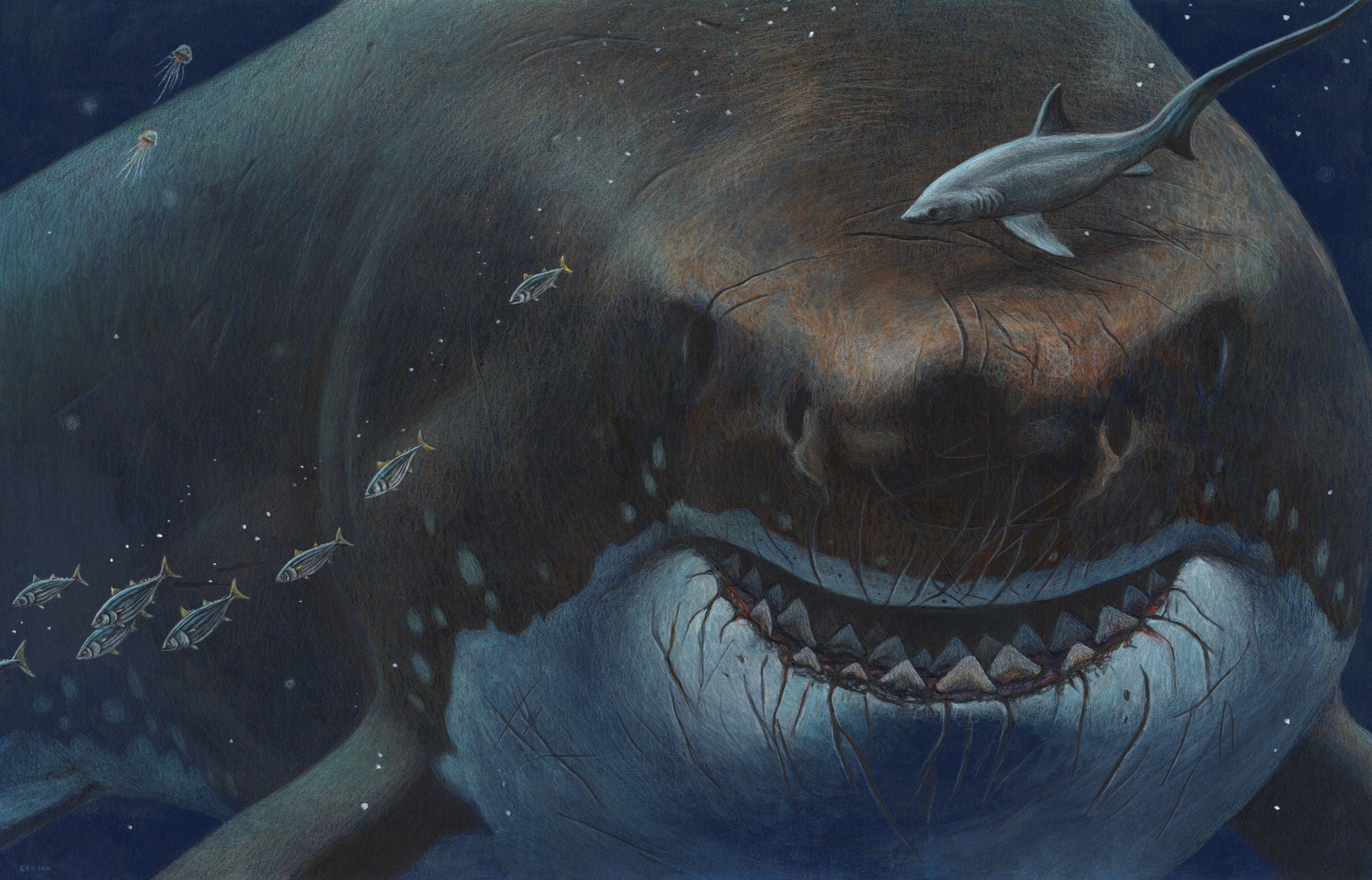Researchers’ 3-D model of the extinct megashark reveals that it was more dangerous than previously thought.

An artist’s reconstruction of Otodus megalodon predating on a species of Balaenoptera whale in the Pliocene Period.Credit…J. J. Giraldo
Five million years ago, immense predatory sharks patrolled the oceans. Their giant teeth — left behind in coastal sediments like spent bullets — inspired the 1843 name that has since become a household word: megalodon.
Despite the megatoothed shark’s fame, however, the megalodon’s exact size and shape have long been a bone of contention. Because shark skeletons are largely made of cartilage, they rarely fossilize, leaving researchers to make wildly varying estimates — anywhere from 35 to 60 feet — using shed teeth and comparisons with living relatives like mackerel sharks and the great white.
But new 3-D modeling of the shark, published on Wednesday in the journal Science Advances, suggests that the megalodon may have been larger, faster and more wide-ranging than previously thought.
In 2014, Catalina Pimiento, a paleontologist at Swansea University in Wales, crossed paths with John Hutchinson, an anatomist at the Royal Veterinary College in London. Dr. Hutchinson specializes in computer modeling around extinct animals. The two eventually joined a team of collaborators to construct a 3-D megalodon computer model, based in part on scans of a preserved spine discovered in the 1860s and housed in the Royal Belgian Institute of Natural Sciences. They also used megalodon teeth and a full-body scan of a great white shark, the megalodon’s closest living analogue.
The resulting model suggested a 52-foot-long, 67-ton animal, about as large as a whale shark. It is possible that other megalodons were even larger, Dr. Pimiento said; there are other fossilized vertebrae that are 50 percent larger than those used in the model, suggesting a maximum length of 65 feet, which is longer than a modern humpback whale. The model megalodon’s jaws could open wide enough to gobble a 26-foot orca in as few as five bites.
How reliable is such computer modeling? “These reconstructions work pretty well when applied to living animals whose mass we know, so they seem to be OK overall,” Dr. Hutchinson said. That is true especially given the natural variations in size among individual animals.

But some researchers point out that the model relies on assumptions about megalodons that have not been confirmed in the fossil record.
“The size and shape of other skeletal components, such as the skull, jaws and all fins, remain speculative,” said Kenshu Shimada, a professor of paleobiology at DePaul University in Chicago.
If the team’s model is accurate, however, it has implications about the enormous predators’ cruising speed — how fast an animal gets from Point A to Point B — and appetite. The team found that megalodons could hit a cruising speed of over three miles an hour, Dr. Pimiento said, much faster than the 33 other sharks they surveyed. Among existing sharks, the fastest cruising speed belongs to the salmon shark, which can manage about two miles an hour.
Given that the slower great white shark can travel nearly 7,000 miles without stopping in order to take advantage of seasonal prey, the team argued, the megalodon likely could have gone much further. Indeed, it would have had to in order to keep itself fed. While fossil remains from Peru have shown that the megalodon occasionally hunted seals, the shark’s “large body size and potential energetic demands suggest that it would need highly caloric prey, like whales,” Dr. Pimiento said.
In modern ecosystems, Dr. Hutchinson pointed out, large migratory animals play an important role in the flow of nutrients — deposited in dung or carcasses — across the globe. As a transoceanic superpredator, the megalodon probably played a similar role in ocean ecosystems tens of millions of years ago, when sea levels were quite a bit higher than they are in the present day.

But apex predators are often uniquely vulnerable to a changing world. In the Pliocene epoch, the growth of ice at the poles led to frequent sea level changes and loss of important offshore habitats. An accompanying extinction event led to a decline in large prey, likely forcing the megalodon into direct competition with smaller sharks like the great white. The last of the enormous predators disappeared three million years ago.
“It would be safe to assume that its extinction had global scale impacts on food webs from the top down,” Dr. Pimiento said.
The team’s model therefore suggests that the megalodon wasn’t just physically bigger than previously assumed; it also probably played a bigger role in ocean systems, too, leaving them poorer — if safer — for its passing.








